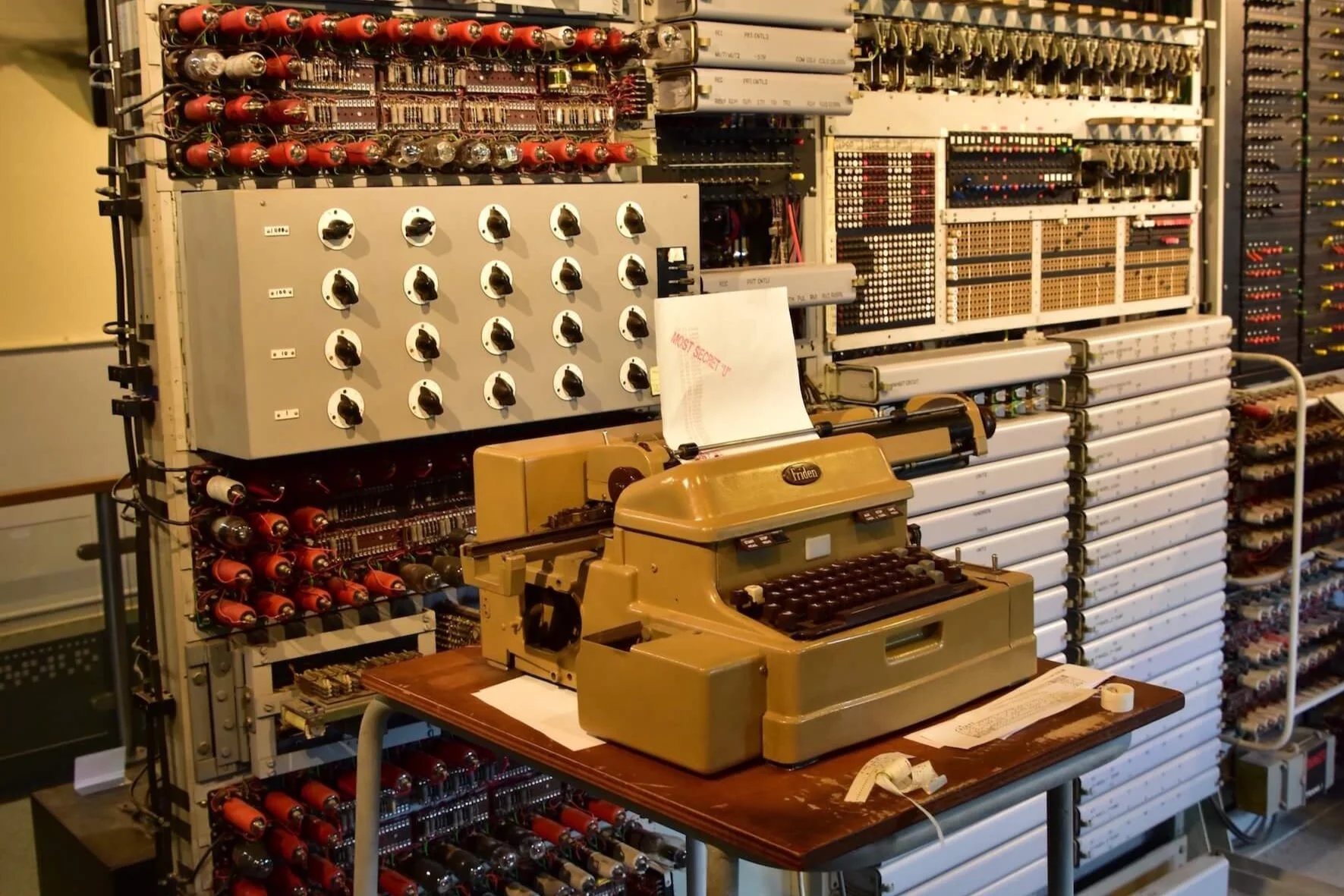Episode 3
New Soundworlds on Canals & Computers
Canals are built waterways dug into the ground which historically have carried water, people, energy, goods–and information. By analogy computers, networks of digital connection linked via the World Wide Web, carry information the same way. The travel and collision of disparate sounds on the early canals of the young United States shaped its music history. We can think the same way about the earliest history of music on computers.
The machines that make the biggest difference are the ones that make things move and bring people together. This week, our postcards take us to critical moments in the history of technology: the completion of the Erie Canal from the Hudson River to Lake Erie across northern New York state, and the development of the first civilian computers just after the Second World War. In both stories there is a surprising amount at stake for music history.
Just clearing a path for and then digging the Erie Canal (mile by mile, by hand) required an immense and dangerous effort. There were not enough workers available, so migrants, many from Britain and Ireland, but also free and enslaved people of color, were brought in to do the job. When the work was done the canal accelerated travel and communication, connecting the metropolis of New York to an immense hinterland to the west. The canal gave the new nation a vastly different sense of its borders and identity.
Those who had given their labor (and in some cases their lives) to make it forged soundworlds for this new space. In the evenings and on rare days off they sang and danced together, making new kinds of music. What they did--a kind of synthesis travelling back and forth on the wonder they had built--would go on to underpin what we recognize as “American music” today.
After 1945 Alan Turing, who had spent the war working in secret developing the electronic computers that helped break “unbreakable” German codes, helped set up a civilian computer lab at the University of Manchester. Turing was by all accounts not a particularly musical man, but there were good ears on his team. One night, for fun (!), one of Turing’s junior colleagues, Christopher Strachey, used an alarm signal already built into a prototype computer to make a basic synthesizer, with hilarious-sounding but in the long run profound results. Thanks to recently discovered archival recordings we can hear its honky efforts, and the sleep-deprived giggles of Turing’s young colleagues when they heard what they had done.
The members of Turing’s lab might not have known it, but what they did eventually opened up a wholly new chapter in the datafication of music. Like the workers on the Erie Canal two centuries ago, we suddenly find that our musical borders have shifted dramatically. Unlike them we ask ourselves where music “is” if it now only lives in digital code.
Key Points
The construction of the Erie canal brought labor and technology together to make new kinds of music, and the connections it made forged a new sense of American identity, also in sound.
Alan Turing was involved in efforts to develop the first civilian computers in Britain after World War Two. Although they didn’t set out to do so, members of his team found that they could synthesize musical sound, inadvertently setting the stage for the cultures of digital music we now live in.
Resources
Chris Smith’s The Creolization of American Culture: William Sydney Mount and the Roots of Blackface Minstrelsy explores how working people came together before the Civil War to make a new kind of “American” culture.
In Decomposed: The Political Ecology of Music Kyle Devine explores the idea that digital music is just as material as music on other media (such as shellac, vinyl, and plastic), and just as bad for the environment.
Listen to recordings of the Turing lab’s experiments in musical synthesis, including “God Save the King” and “Ba Ba Black Sheep”
The IEEE (Institute of Electronic and Electronics Engineers) website has a detailed and engaging description of early computing and music-making in Alan Turing’s postwar Manchester lab.
You can read more about Alan Turing in B. Jack Copeland, Turing: Pioneer of the Information Age.
All of the books mentioned in the episode can be found in our Sounding History Goodreads discussion group. Join the conversation!
Ep. 3 Collaborative YouTube Playlist – You’re welcome to contribute!
